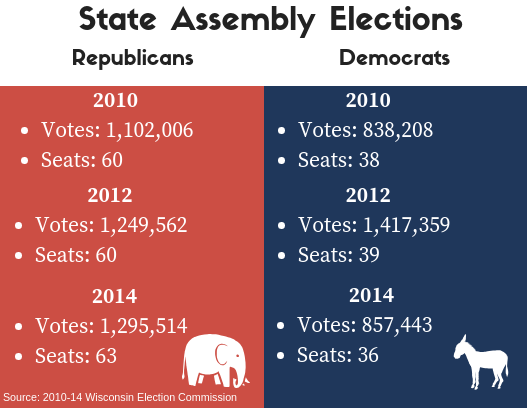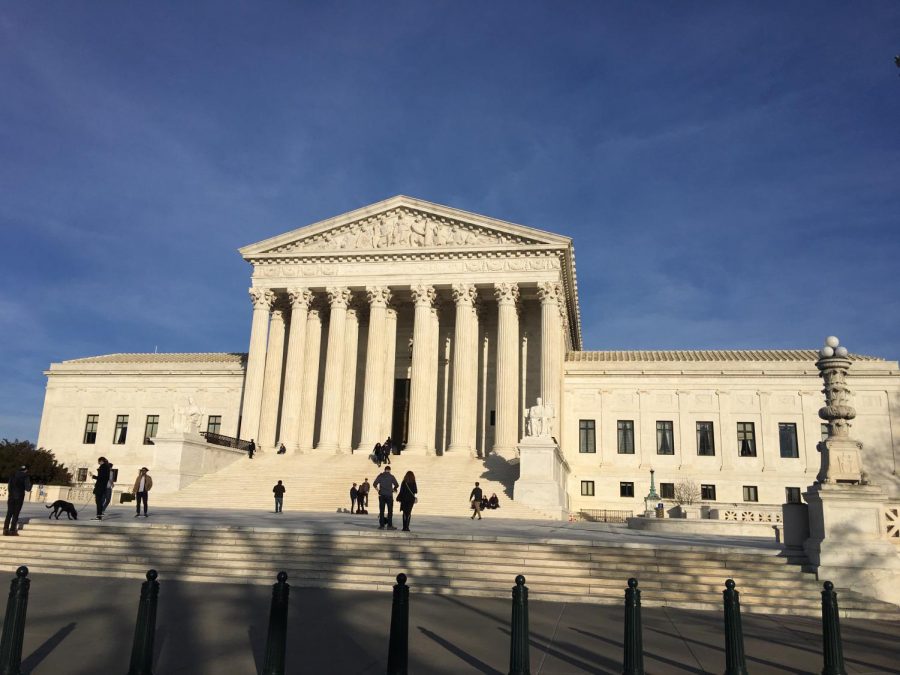A recent Marquette Law School poll indicates broad support for redrawing the state’s electoral district boundaries through a nonpartisan commission. A nonpartisan commission has the support of 72 percent of Wisconsin’s voters, including about 80 percent of Democrats and 60 percent of Republicans. These voters should encourage the state’s top lawmakers to enact redistricting reform and end Wisconsin’s excessive gerrymandering.
Wisconsin’s house representatives and state legislators are elected from districts, or political boundaries. For example, Congresswoman Gwen Moore represents Wisconsin’s 4th district, which encompasses the city of Milwaukee and some surrounding suburbs. However, district lines aren’t a natural geographic occurrence. They’re currently drawn by the Wisconsin State Legislature, with veto power given to the governor.
Under this system, the state legislature and governor have incentive to create electoral boundaries to favor their own party, an action known as gerrymandering. Republicans created heavily gerrymandered boundaries during the last redistricting cycle in 2011, as they controlled the governor’s office and both houses of the legislature. The partisan effects of these boundaries can be seen in the 2018 state assembly results, as Democrats received 53 percent of the total votes cast for assembly positions, but won just 36 of the 99 assembly seats.
Republicans have an inherent advantage in gaining more assembly seats because their voters are more spread out across the state, while Democratic supporters are heavily concentrated in Milwaukee and Madison. However, this natural sorting doesn’t fully explain the Republican advantage in assembly elections. In 2018, researchers at Carnegie Mellon University and the University of Pittsburgh conducted over one trillion computer simulations on the Wisconsin Assembly map, and found that there was less than a 1 in 1,000 chance that a randomly generated map could be as biased as the current one.
Wisconsin’s Republican lawmakers were able to effectively gerrymander the boundary lines in their favor through strategies known as packing and cracking. Packing involves concentrating the opposing party’s supporters in a few districts, so they win by overwhelming majorities, but still secure less seats overall. Cracking divides the opposing party’s supporters among several districts, so they have difficulty winning a majority in each one. In 2011, Wisconsin Republicans utilized sophisticated computer programs that showed politicians how to crack or pack each district to gain the best electoral advantage, according to a report from the New York Times.
Thankfully, Wisconsin has an opportunity to end the controversy surrounding gerrymandering. Every state must redraw their electoral boundaries after the completion of the 2020 United States Census. In the lead up to this redistricting, states such as Colorado and Michigan have agreed to establish independent commissions to draw their congressional and legislative boundaries, taking the process out of politicians’ hands.
The success of independent commissions can be seen in California, which created its Citizens Redistricting Commission in 2008. The commission is comprised of 14 of the state’s voters, divided almost equally between registered Democrats, Republicans and Independents. These voters are selected by the California State Auditor through a rigorous application process which inclues background investigations, essays and letters of recommendation.
Some voters will likely be skeptical that everyday citizens could create better district maps than politicians. However, the Citizens Redistricting Commission attempts to give full transparency about its decisions by holding public meetings and giving detailed records of how district lines are decided. Research from the Public Policy Institute of California found that the commission has created maps that are fair to each party and increase electoral competitiveness.
Counties across Wisconsin are already pushing the state legislature to enact a similar commission. Currently, 41 out of 72 counties have signed resolutions in support of nonpartisan redistricting. Wisconsin voters should also contact their legislature representatives and call for an overhaul of the state’s electoral boundaries. A nonpartisan commission will ensure that election results aren’t rigged in one party’s favor far before Election Day comes around.








